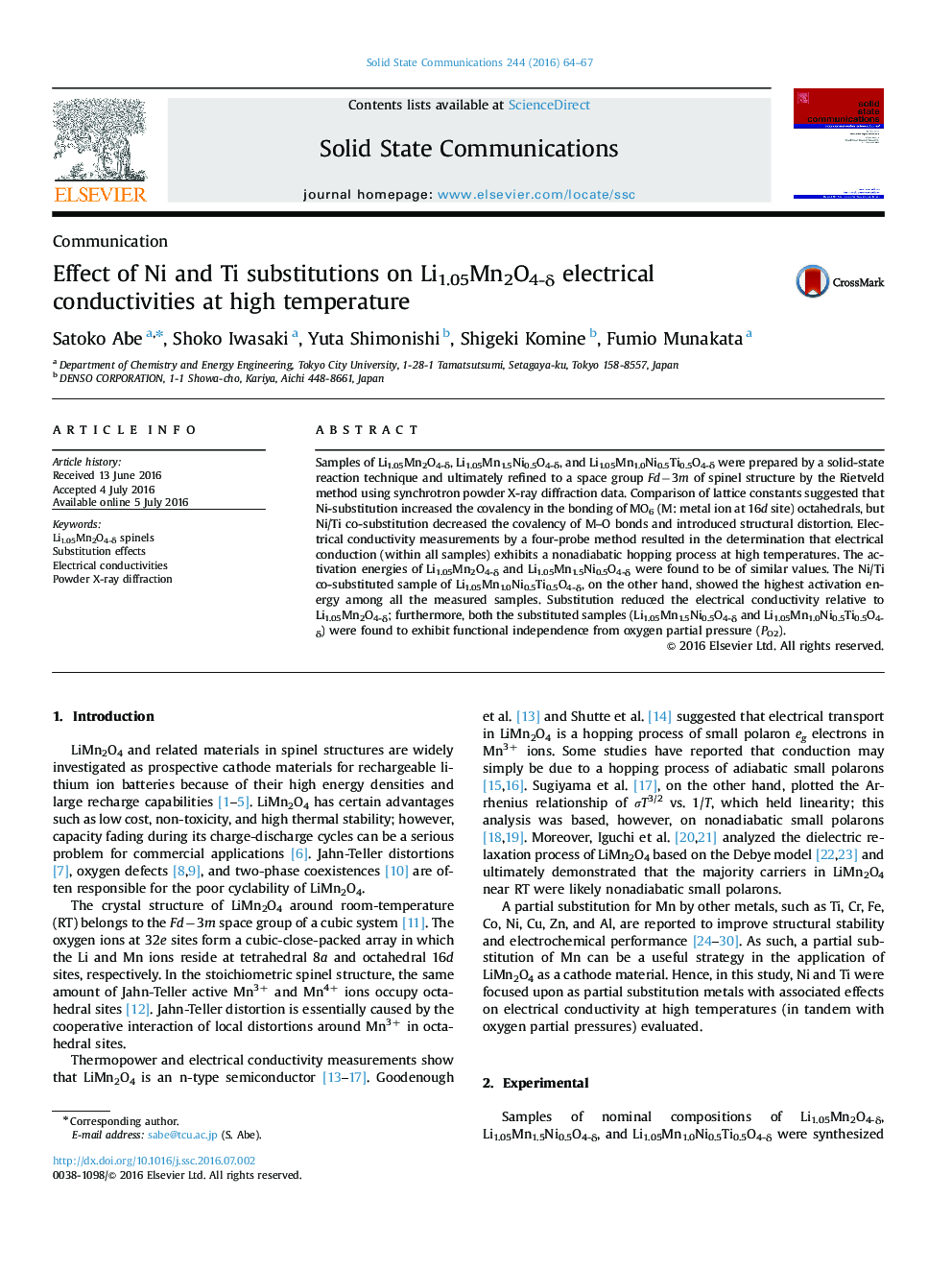| Article ID | Journal | Published Year | Pages | File Type |
|---|---|---|---|---|
| 1591081 | Solid State Communications | 2016 | 4 Pages |
•Ni-substitution increases the bonding covalency of MO6 octahedra.•Ti-doping decreases the covalency of M–O bonds and introduces structural distortion.•The primary mechanism seems to be a hopping-process of nonadiabatic small polarons.•Ni/Ti co-substituion increases activation energy of electrical conductivity.•The substituted samples are independent from oxygen partial pressure.
Samples of Li1.05Mn2O4-δ, Li1.05Mn1.5Ni0.5O4-δ, and Li1.05Mn1.0Ni0.5Ti0.5O4-δ were prepared by a solid-state reaction technique and ultimately refined to a space group Fd−3m of spinel structure by the Rietveld method using synchrotron powder X-ray diffraction data. Comparison of lattice constants suggested that Ni-substitution increased the covalency in the bonding of MO6 (M: metal ion at 16d site) octahedrals, but Ni/Ti co-substitution decreased the covalency of M–O bonds and introduced structural distortion. Electrical conductivity measurements by a four-probe method resulted in the determination that electrical conduction (within all samples) exhibits a nonadiabatic hopping process at high temperatures. The activation energies of Li1.05Mn2O4-δ and Li1.05Mn1.5Ni0.5O4-δ were found to be of similar values. The Ni/Ti co-substituted sample of Li1.05Mn1.0Ni0.5Ti0.5O4-δ, on the other hand, showed the highest activation energy among all the measured samples. Substitution reduced the electrical conductivity relative to Li1.05Mn2O4-δ; furthermore, both the substituted samples (Li1.05Mn1.5Ni0.5O4-δ and Li1.05Mn1.0Ni0.5Ti0.5O4-δ) were found to exhibit functional independence from oxygen partial pressure (PO2).
